The paradox of choice: Why can a wide product assortment stress your customers and affect your sales?
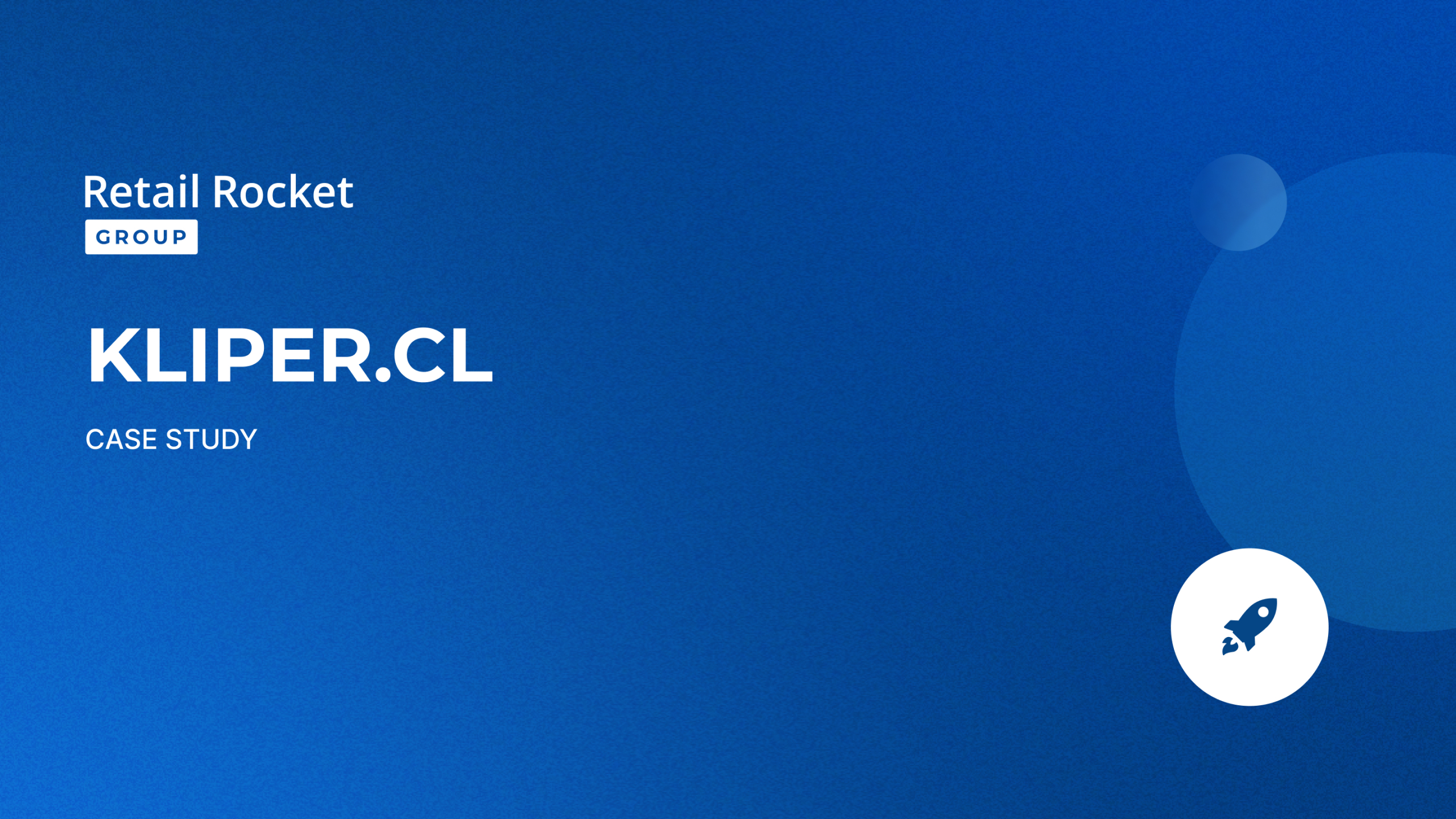
The Internet offers us with a single click the ability to access a large amount of content and products, from wherever and whenever you want. However, being continuously subjected day after day to an oversupply and too many stimuli can generate an excess of noise that, together with the fact that our time is limited, can lead to exhaustion and the inability to make a decision. That’s what the American psychologist Barry Schwartz talks about in the book “The Paradox of Choice: why more is less.”
What is the Paradox of Choice?
The greater the number of options, the higher the insecurity and uncertainty generated when making a decision, and the fewer the number of choices. This paradox refers to the stress we experience when we have too many alternatives.
Generally, happiness and well-being have always been associated with increasing human freedom of choice. And while it is true that limiting options oppresses the individual and having greater decision-making capacity makes us feel better, too many options can have the opposite effect.
Have you ever spent more time watching Netflix’s catalog than enjoying its content? That’s a clear example where an infinity of options on and off the platform sometimes leads to the inability to decide.
That can also happen in online stores and marketplaces with a large assortment and number of brands, where it is generally more challenging to make a decision in the face of the multitude of offers. That coupled with the overwhelming number of online alternatives, stores’ sales can be affected by the “Paradox of Choice”.
Can this phenomenon be combated? The answer is yes, and Artificial Intelligence will be your best ally to struggle with it. The key is to simplify the customer journey. But how? By creating a unique version of the online store for every single customer in a multichannel strategy.
The paradox of choice in e-commerce: the era of the infinite shelf
Let’s look at what factors can lead your customers to experience this purchase decision stress and tips for solving it with AI technology capabilities.
#1. Energy loss
Browsing through an endless catalog to choose the best option is a psychological strain on the buyer, who often ends up abandoning the online store in the face of such a wide assortment and the inability to find what they are looking for.
Solution
Are you thinking about reducing your catalog? Maybe in physical stores specializing in a particular type of product could be a good option. Still, in e-commerce, we recommend that you use the power of Artificial Intelligence to show a personalized offer for every visitor without decreasing the assortment.
Prevent your customers from overthinking by using the store information about their interests and behavior to show them what they are looking for. AI technology integration lets Kliper.cl, an online fashion store with a large number of brands in its assortment, increase the number of orders by more than 20% with product recommendation blocks on the website and in the email channel.
#2. Decision-making paralysis
The inability to make a decision usually postpones or paralyzes the purchase, leading the user to abandon the online store or, in the best case, to resume it at another time, sometimes doing it from different devices. In these cases where customer store information is available, AI personalization technology will be much more accurate.
Solution
Use different smart merchandising strategies for desktop and mobile versions and for new visitors and regular customers. Unlike physical stores, every user can get their unique version of the online shop based on their behavior. In addition, Artificial Intelligence can determine when and which product will be shown to a specific customer by updating the online store window in real-time.
Suppose a new visitor lands on an online store for the first time. Since any information is stored about their interests and preferences, showing bestsellers is an excellent option to attract new visitors based on products bought by other customers. In contrast, the showcase that the online store displays to regular customers will offer a multitude of versions, as many as there are users, as they will be personalized with recommendations based on individual interests and statistical conversion predictions.
Shopping from a mobile device allows the user to see less information than in the desktop version, so it is critical that the recommendations work as efficiently as possible on smartphones or tablets.
At the Eldorado online store, the recommendation algorithms for the homepage are different for each version of the site. For desktop view, recommendations are displayed based on a user’s interests, while the mobile version offers bestsellers based on other customers’ purchase history, which also matches their preferences.
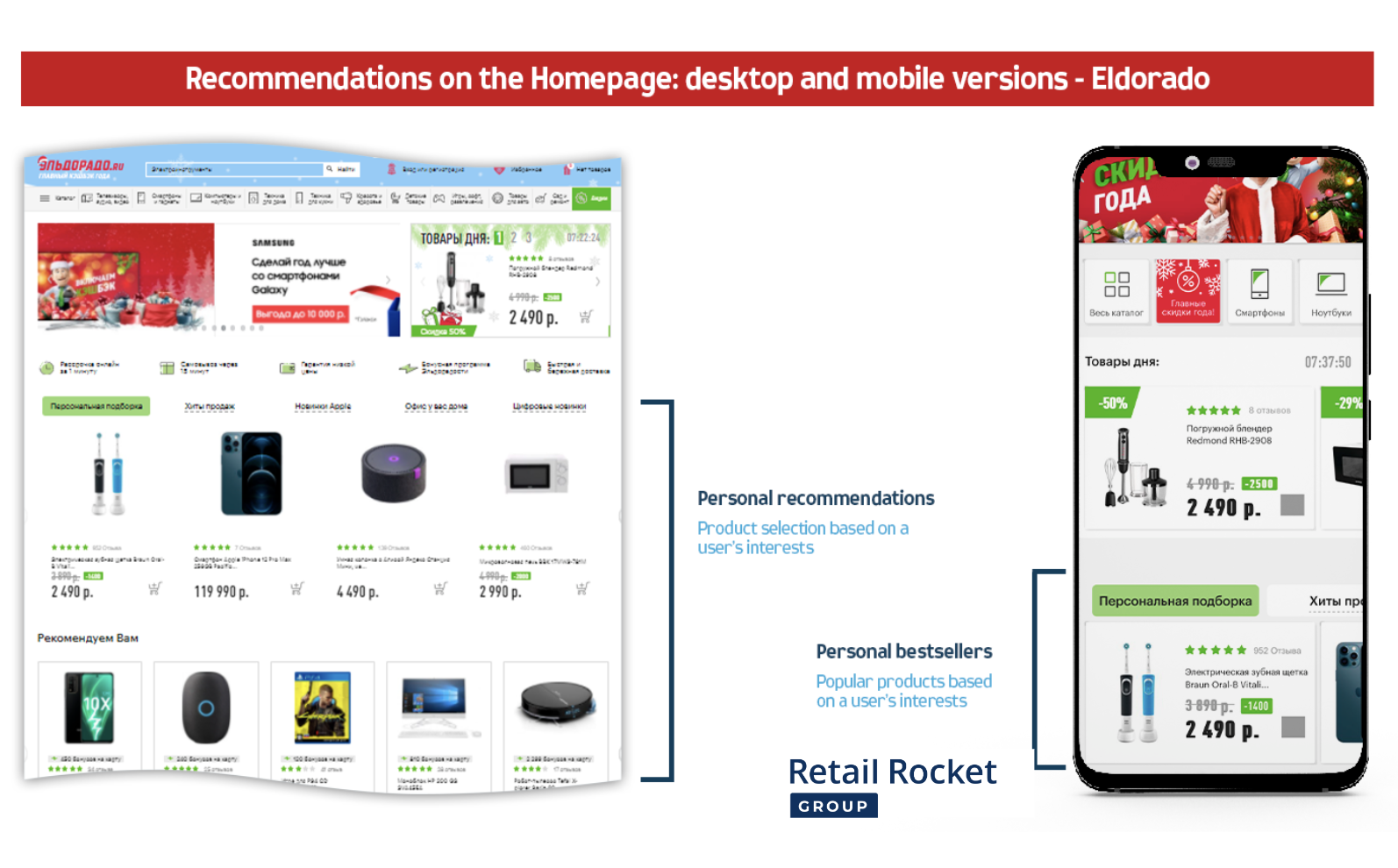
To store information about the site’s mobile version behavior opens up new possibilities to complete a 360-degree profile of the customer. The more we know about them, the better the chances of making the most relevant offer and encourage them to decide.
#3. Opportunity cost
Schwartz states in his book that when we choose one option among many others, we begin to consider hypothetical trade-offs. And product evaluation is done in terms of missed opportunities, rather than taking into account the potential of the chosen product itself. In other words, after choosing one of the options, the advantages of the discarded product’s features will prevent us from enjoying our choice, thinking about the positive aspects that we are missing out on. That is exactly what is known as Opportunity Cost.
In 2000 Sheena S. Iyengar, a professor at Columbia University, conducted an experiment that showed customers’ attitude in a supermarket to a counter filled with all kinds of exotic jams for a tasting versus one with fewer choices. The counter with 24 options attracted 60% of the customers, who tasted an average of 2 flavors and 3% bought. The one offering 6 jam flavors drew 30% of the customers who tasted an average of 2 types, and 40% purchased.
Solution
Displaying the right offer for every customer is very effective in helping to make a decision, especially at the purchase stage when the buyer analyzes the product features. Our recommendation is to show a recommendation block on the product page with alternatives, allowing the user to compare similar products and narrowing down the wide assortment displayed.
Kliper online store, in addition to similar products, shows a second block with related products usually purchased with the one being displayed. Cross-selling will help to increase the average order value.
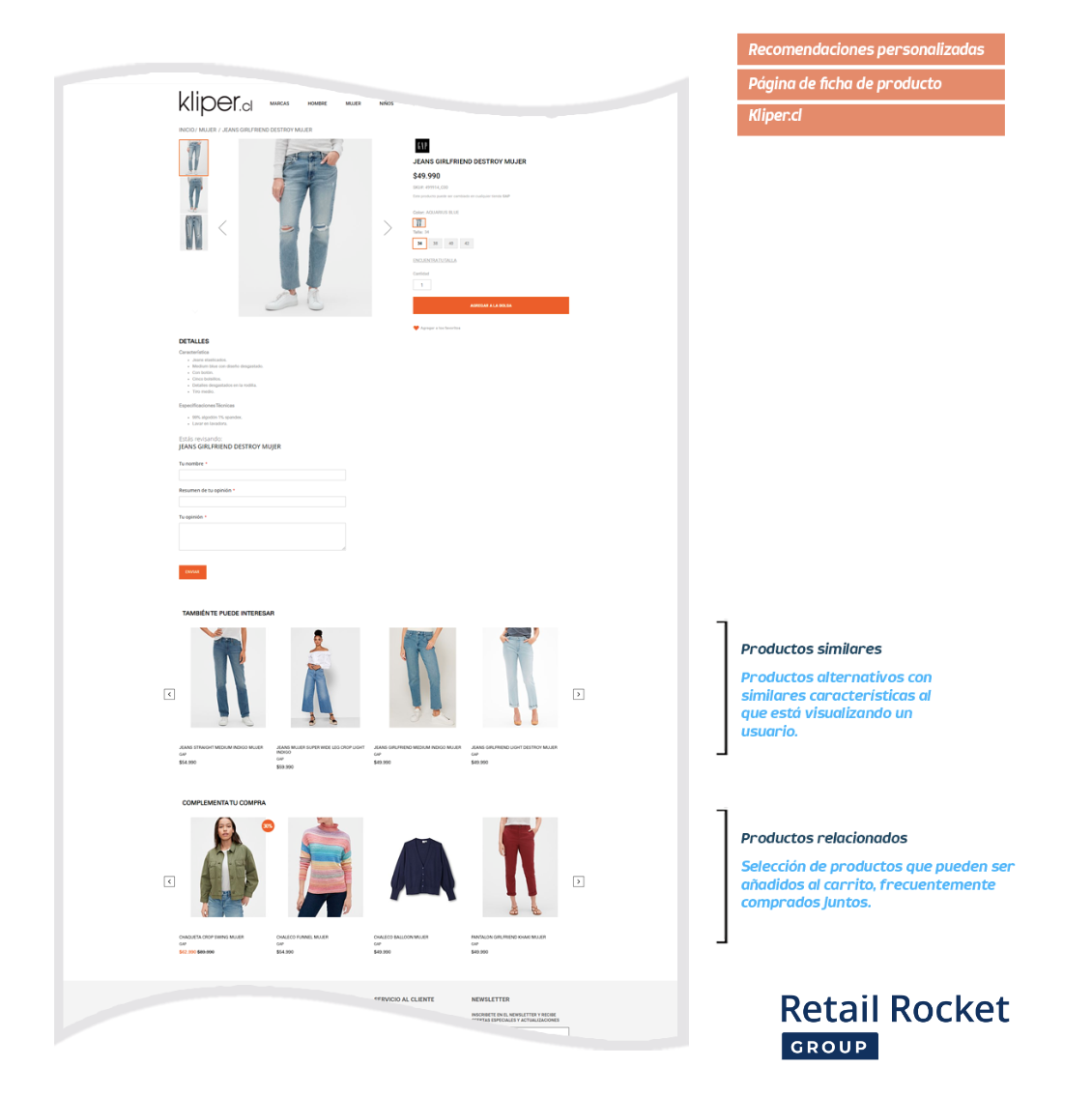
#4. Not being sure of having made the right choice
Without having seen and evaluated all the possible options, making a decision can generate doubts in the buyer as to whether the decision taken is the right one, preventing them from feeling completely satisfied and abandoning the sales process, even after having sent products to the cart.
Solution
Suppose a user added products to the cart but did not complete the purchase. In that case, we recommend automating triggered emails for the abandoned cart scenario and display a personalized product offer based on the visitor’s behavior on the online store. Showing a recommendation block with alternatives to the products added to the abandoned cart will help the user make a decision, so the online store will recover a probably lost user if it were not thanks to AI.
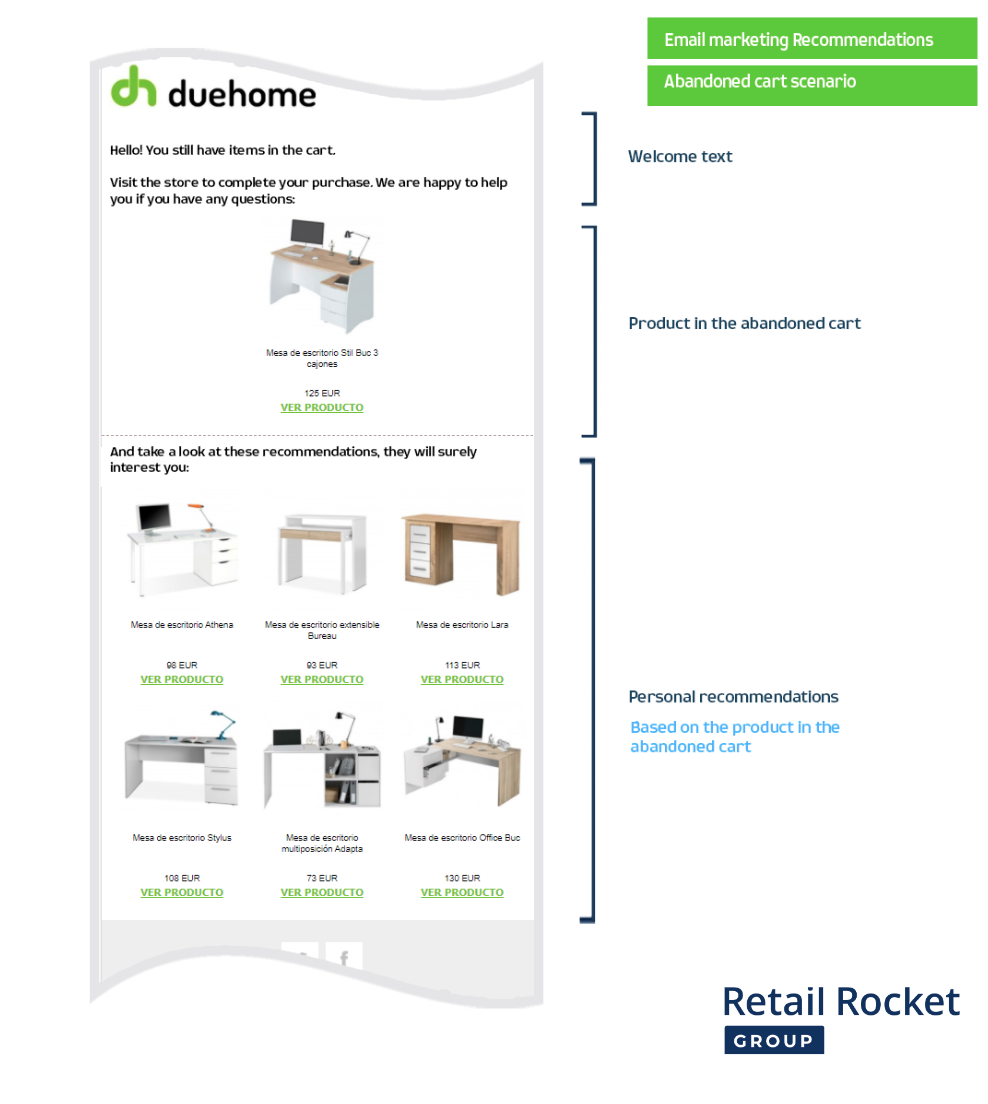
#5. High expectations and self-blame feelings
When an online buyer is shown a wide product assortment, they tend to feel pressured and raise their expectation of making the perfect decision. However, in the case of finally deciding to buy, other factors of dissatisfaction and regret for not having taken other options arise.
If the number of alternatives is more limited, the dissatisfaction can be placed on factors external to the user. However, too many options will lead to a feeling of self-blame for the fact of thinking that in the face of so many options within reach, there was a better one that we have not been able to see.
Solution
Using triggered emails for the post-sale scenario will allow you to know your customer satisfaction after finishing an order. Tom Tailor sends an email to get their feedback, which is also a perfect opportunity to show personal recommendations to increase engagement.
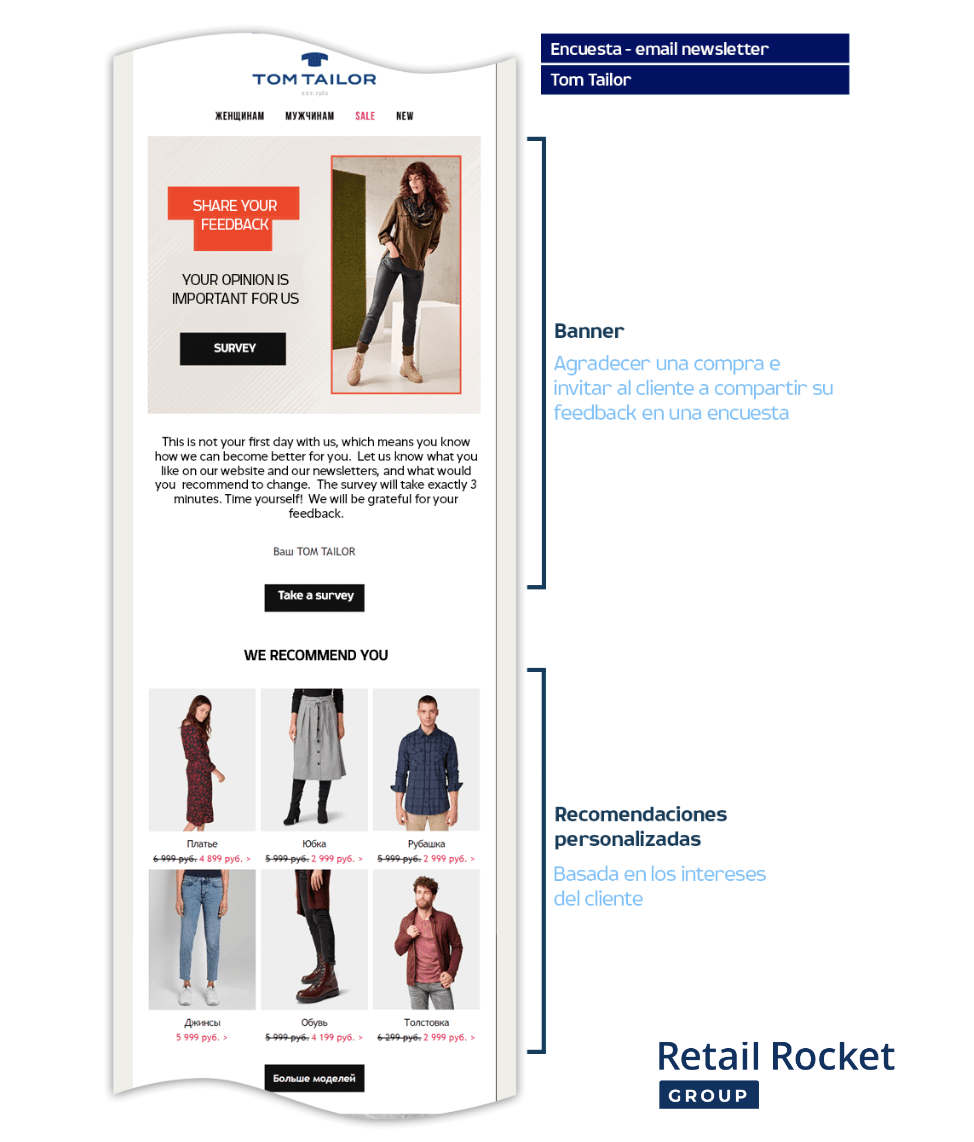
Conclusion
Offering a large number of possibilities can lead your customer to abandon the purchase forever. However, on e-commerce stores, limiting your offer is not the best solution to avoid this. Use the capabilities of Intelligence and simplify the customer journey through your online store by facilitating the search and decision making. By showing every customer what they are looking for will increase their satisfaction and also your sales. Battling The Paradox of Choice is possible with the implementation of recommendations. AI personalization will make your customers happier as well as grow your online store’s sales.
















